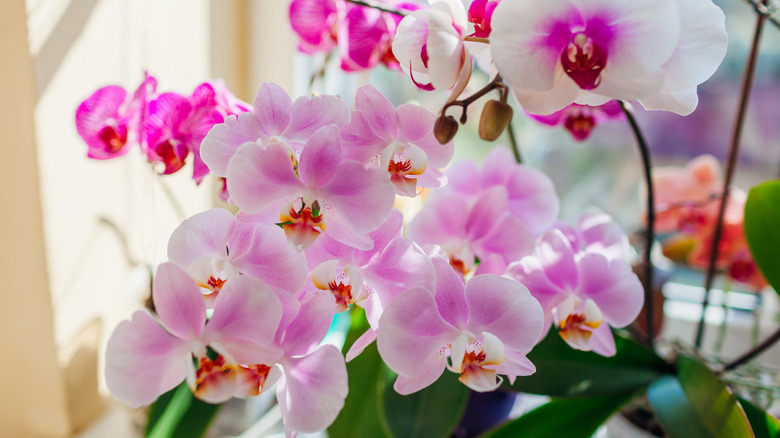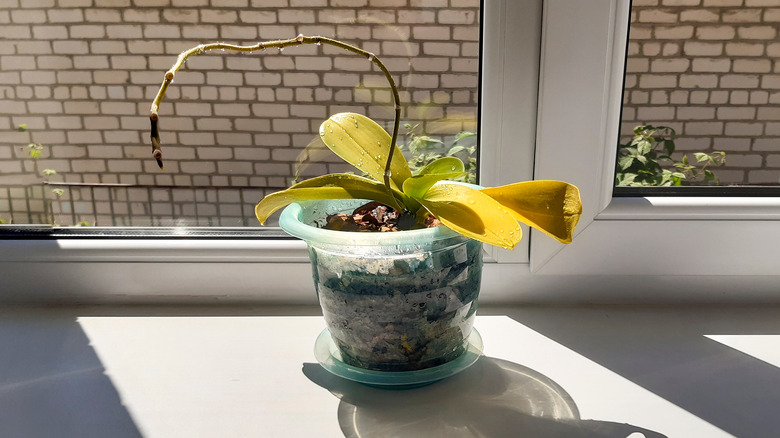The Common Mistake You Should Avoid Making With An Orchid
We may receive a commission on purchases made from links.
Orchids are loved for their exotic beauty and symbolic meaning of prosperity and good health, making them one of the top houseplants people love getting as gifts. While they aren't particularly difficult to keep alive, they have unique care requirements that can trip up even experienced gardeners.
If you're a new orchid parent and wondering how to successfully care for indoor orchids, you may find yourself in a bit of a panic when your plant's flowers start to wilt and fall off. It's easy to assume that an orchid losing its blooms means it's dying, especially when the bare, drooping stem and dull leaves give an impression of poor health. However, this couldn't be further from the truth!
When orchids shed their flowers, it's just a sign that they're entering a natural resting period. This dormancy phase is an essential part of an orchid's life cycle, allowing the plant to store up energy for a future round of flowering. In other words, if your orchid loses its blooms, don't panic — it's just taking a break. Rather than tossing it out, you can actively help your orchid thrive through this dormant stage so its beautiful blooms will return in the next season.
Supporting your orchid through dormancy
Once your orchid has entered its resting phase, it's natural for the flower stem to dry up and turn brown. Its leaves may lose some of their shine, becoming a little limp or faded. Many orchid owners mistake this faded look for poor health, but it's part of the plant's dormancy process. By understanding this, you can adequately support your orchid until it's ready to rebloom, which can take anywhere between 6-9 months.
During dormancy, it is an excellent opportunity to repot your orchid in a larger pot and add some orchid-specific fertilizer, like the rePotme Orchid Food, or follow tips for making a DIY orchid fertilizer to ensure that it has all the nutrients it needs to regrow. Since it won't look very pretty during this stage, you can incorporate your orchid into a display with other greenery, such as mosses or ferns, to keep your space vibrant. This blend of plants adds a natural look while also supporting the orchid's humidity needs.
Orchids still need bright, indirect light and regular watering in this stage. With patience and care, your orchid will reward you by reawakening, often blooming even more beautifully than before. So, if you find yourself anxiously watching over your orchid as it sheds its flowers, remember that it's all part of the natural cycle.

